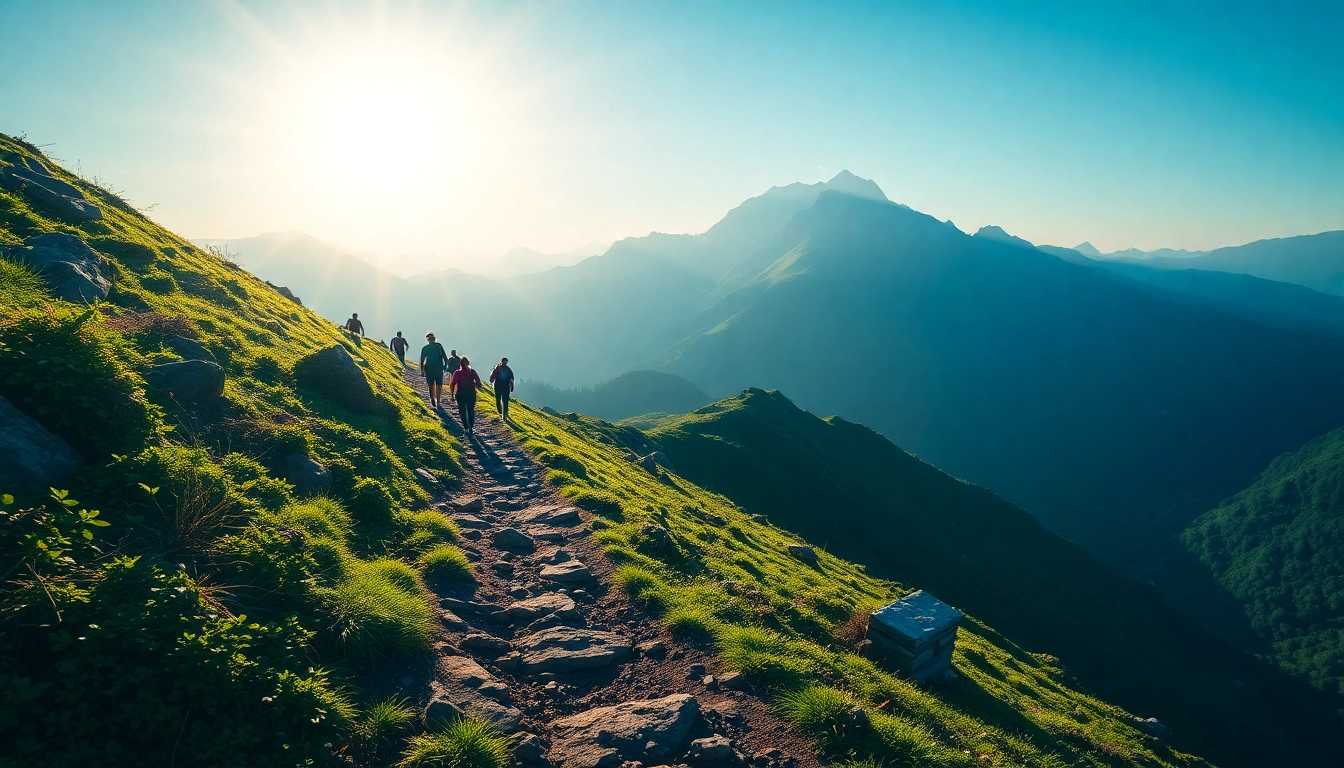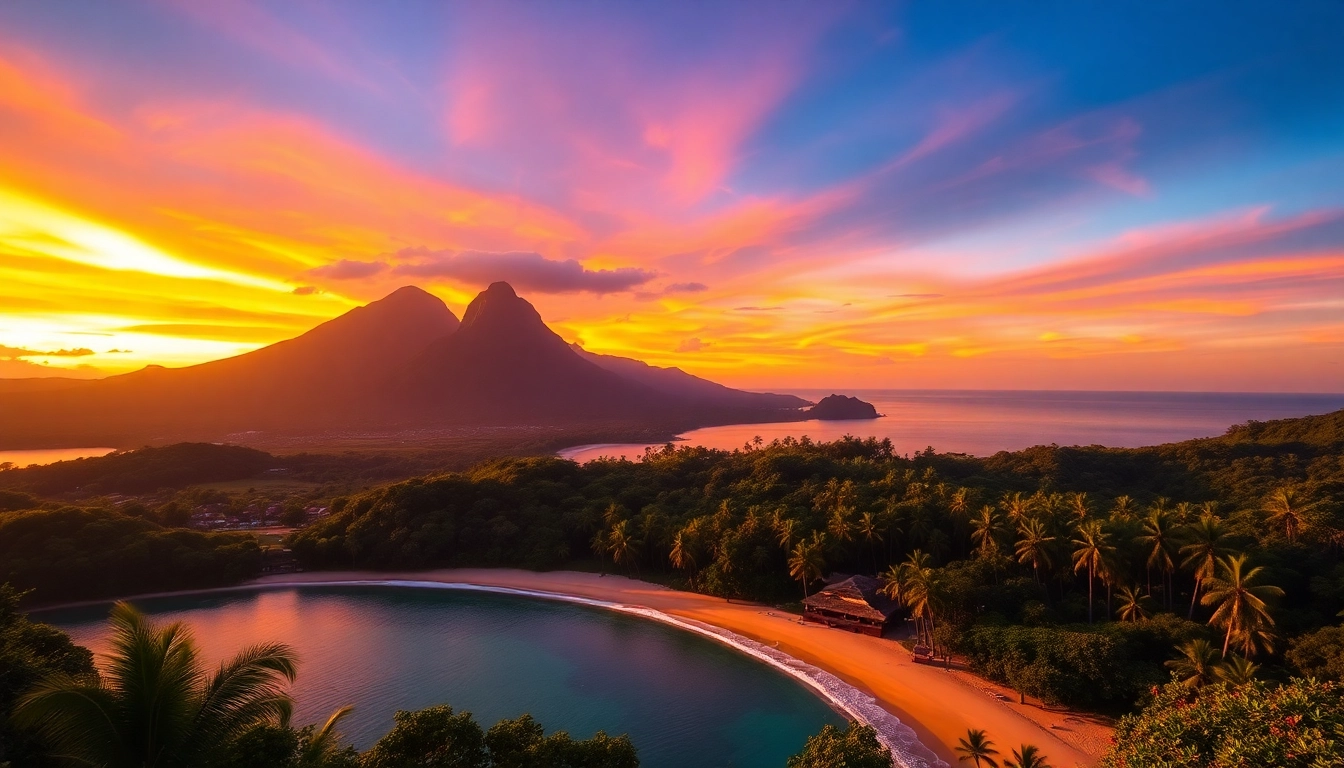Understanding Hiking: A Complete Beginner’s Guide
What Is Hiking and Its Benefits
Hiking, in its essence, is a vigorous and leisurely walk through natural terrains, often on designated trails or footpaths in the countryside. It has evolved from a simple activity into a popular recreational pursuit that promotes physical health, mental wellness, and a profound connection with nature. The term hike, as defined in various dictionaries, refers to walking a long distance especially for pleasure or exercise, emphasizing its role as an outdoor activity that combines fitness with adventure.
Beyond the physical benefits—such as improved cardiovascular health, muscle strengthening, and weight management—hiking positively impacts mental health by reducing stress, enhancing mood, and fostering mindfulness. Scientific studies reveal that time spent in natural settings can lower cortisol levels, decrease anxiety, and boost overall psychological resilience. Additionally, hiking can lead to social benefits when done with friends or family, fostering stronger bonds and shared experiences.
Furthermore, hiking offers educational opportunities, from learning about local flora and fauna to understanding environmental conservation. Whether you seek a casual stroll along scenic routes or a challenging mountain ascent, hiking adapts to various skill levels and interests.
Different Types of Hikes: From Casual Walks to Mountain Trekking
The world of hiking encompasses a broad spectrum of activities, each suited to different interests, skills, and environments. Understanding these types can help enthusiasts select appropriate trails to match their experience level and intended outcomes.
Casual or Leisure Hikes
These are often short, accessible routes, perfect for beginners or those looking to enjoy nature without strenuous effort. Parks, nature reserves, and urban trails in Indonesia or nearby natural landscapes offer excellent options for relaxed walks. These hikes emphasize leisure, scenery, and gentle exercise.
Day Hikes
Usually lasting a few hours to a full day, day hikes involve traversing trails that do not require overnight camping. They are suitable for individuals with moderate fitness levels and can include mountain hikes, forest trails, or coastal pathways.
Trekking or Backpacking
For the more adventurous, trekking involves multi-day journeys often over rugged terrains, requiring proper planning and gear. Indonesia’s diverse landscapes, such as the volcanic mountains or jungle terrains of Lombok, are ideal for such expeditions. Trekking fosters resilience, self-reliance, and offers immersive experiences in pristine environments.
Mountain and Summit Climbing
The most challenging form of hiking, mountain climbing demands technical skills, specialized equipment, and often guides. Peaks like Rinjani or other tall Indonesia mountains serve as prime destinations for experienced climbers seeking to conquer summits and enjoy panoramic views.
Trail Running and Ultra-Marathons
Combining endurance running with trail navigation, this activity is for athletes looking to push physical limits amid nature’s beauty. Indonesia hosts several trail running events that draw international participants.
Essential Hiking Gear and Preparation Tips
Preparing adequately is vital for a safe and enjoyable hike. The right gear, proper planning, and awareness of the environment make all the difference.
Clothing
Clothing should be functional, breathable, moisture-wicking, and layered appropriately for the weather. Waterproof jackets, thermal layers, and quick-dry pants are advisable. Ultra-lightweight hiking shoes with good traction provide comfort and safety on varied terrains.
Equipment
- Backpack: Sized to carry essentials without excess weight.
- Navigation tools: Map, compass, or GPS devices.
- Hydration: Water bottles or hydration bladders.
- Food: High-energy snacks and meals.
- Safety gear: First aid kit, whistle, multi-tool.
- Lighting: Headlamps or flashlights with extra batteries.
Preparation Checklist
– Research and select a trail suitable for your skill level.
– Check weather forecasts and prepare for seasonal variations, especially in Indonesia’s tropical climate.
– Inform a trusted person about your plan, including start point, expected return time, and emergency contacts.
– Carry necessary permits if required by local authorities.
– Pack light but comprehensively; ensure essentials are easily accessible.
Practical Tips for Beginners
Start with shorter, well-marked trails to build confidence. Practice basic navigation skills and familiarization with gear. Focus on pace, hydration, and listening to your body. Remember, the objective is enjoyment, not endurance at all costs.
Planning Your Hike: Key Factors to Consider
Choosing the Right Trail for Your Skill Level
Selecting an appropriate trail is crucial to having a rewarding experience. Assess your fitness, experience, and comfort with challenging terrains. For beginners, gentle loop trails in parks or coastal paths might be ideal, while seasoned hikers may aim for mountain summits or dense jungles like those on Lombok or Bali.
Resources such as trail guides, local outdoor clubs, or official park websites can offer valuable insight. For example, the Gunung Rinjani trail provides multiple routes of varying difficulty levels suitable for different skill sets.
Weather and Seasonal Considerations
Indonesia features a tropical climate with distinct wet and dry seasons. Planning around these seasons affects safety and comfort:
- Dry Season (May to September): Ideal for most hikes, with less rain and clearer trails.
- Wet Season (October to April): Trails may become muddy, slippery, and more hazardous. Flooding and landslides are potential risks; hiking during this time requires extra caution.
Always check real-time weather forecasts and trail conditions before departure. Carry rain gear, and be prepared to modify plans if weather deteriorates unexpectedly.
Permits, Maps, and Safety Precautions
Many national parks and conservation areas in Indonesia require permits for hiking, especially in protected zones. Securing permits in advance prevents legal issues and supports conservation efforts.
Carry detailed maps and consider using GPS devices for navigation. Familiarize yourself with emergency exit routes and the nearest rescue stations. Respect local regulations and environmental guidelines, such as Leave No Trace principles, to preserve the natural beauty.
Executing a Successful Hike: Step-by-Step Strategies
Start Slow and Maintain Rhythm
Beginning with a manageable pace allows your body to adapt to sustained effort. Use a rhythmic breathing pattern and steady stride to conserve energy. For instance, adopting a conversational pace often indicates sustainable effort, especially during uphill sections.
Regular breaks to rest, hydrate, and enjoy the scenery help prevent fatigue and mental burnout. Experienced hikers recommend practicing a “power hike” technique on steeper inclines to conserve energy.
Navigation and Trail Etiquette
Always follow trail signs and stay on designated paths to prevent environmental damage. Respect other hikers by yielding the right of way, packing out all trash, and minimizing noise disturbance. Use respectful language with fellow trail users and locals.
Navigation skills involve reading maps, understanding trail markers, and optionally employing GPS devices. Before setting out, review your route thoroughly, and carry backup navigation tools in case of device failure.
Managing Energy and Hydration
Maintaining hydration is critical, especially in Indonesia’s humid climate. Aim to drink small amounts frequently rather than infrequent large quantities. Complement water with electrolyte-rich drinks if necessary.
Fuel your body with high-energy snacks such as nuts, dried fruits, energy bars, and gels. Managing pace and nutrition effectively prevents fatigue and enhances endurance for the duration of the hike.
Maximizing Your Hiking Experience: Expert Insights
Capturing Scenic Moments and Photography Tips
Nature provides countless photo opportunities—vibrant flora, panoramic vistas, waterfalls, and wildlife. Use a lightweight camera or smartphone with a wide-angle lens to capture these moments. Golden hours—early morning and late afternoon—offer the best lighting for landscape photography. Practice framing and patience to get compelling shots.
Incorporate elements such as leading lines, symmetry, and foreground interest to elevate your photos. Respect wildlife and habitat; avoid disturbing animals or damaging delicate ecosystems for the perfect shot.
Leave No Trace: Eco-Friendly Hiking Practices
Preserving the natural environment is a shared responsibility. Follow the Leave No Trace principles:
- Plan ahead and prepare.
- Travel and camp on durable surfaces.
- Dispose of waste properly—pack out all trash.
- Leave what you find; do not pick plants or disturb wildlife.
- Minimize campfire impacts or avoid fires altogether.
Sustainable hiking ensures that future generations can enjoy the untouched beauty of Indonesia’s landscapes.
Tracking Progress and Setting Personal Goals
Use trail logs, mobile apps, or GPS devices to monitor distance, elevation gain, and pace. Setting realistic goals—like reaching a summit or completing a certain number of hikes per month—keeps motivation high. Celebrate milestones and reflect on experiences to continually improve your skills and appreciation for outdoor adventures.
Advanced Hiking Skills and Long-Term Planning
Navigation Techniques and Use of GPS Devices
Mastering navigation involves more than following marked trails. Learn to read topographic maps, interpret compass bearings, and use GPS devices effectively. Modern GPS units offer waypoint marking, route plotting, and emergency tracking features. Combining traditional and digital skills enhances safety and independence.
Regular practice in diverse environments builds confidence and proficiency. In Indonesia, where terrains can be rugged and variable, advanced navigation skills are invaluable.
Multi-day Hiking and Camping Essentials
Multi-day hikes in Indonesia provide immersive experiences, but require meticulous planning. Essential items include lightweight tents, sleeping bags suitable for the climate, cooking gear, and sufficient food supplies. Water purification methods—such as filtering or chemical treatments—are vital in remote areas.
Safety protocols involve setting up camp securely, managing waste responsibly, and establishing communication plans, such as satellite messengers or emergency contacts.
Building Resilience and Physical Fitness for Hiking
Long-term hiking success hinges on physical preparation. Incorporate aerobic training, strength exercises, and flexibility routines into your regimen. Focus on core stability, leg strength, and cardiovascular endurance. Regular hiking itself boosts fitness, but cross-training activities like cycling, swimming, and weight training can accelerate progress.
Mental resilience is equally important—developing patience, problem-solving skills, and adaptability prepares you for unforeseen challenges on the trail.

